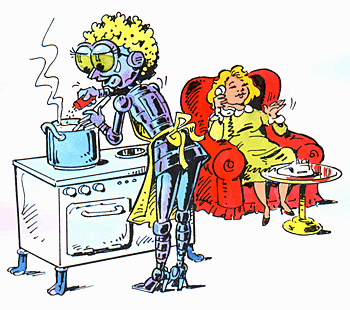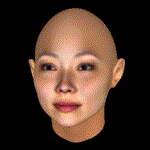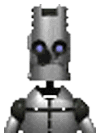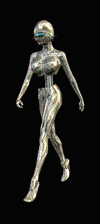-oid, -oidal, -oidism, -odic
(Greek: a suffix; like, resembling, similar to, form)
2. Resembling, characteristic of, or caused by a fungus; such as, a fungoid growth.
2. A slightly flattened sphere which is in the shape of the Earth: A geoid is used in calculating the precise measurements of points on the Earth's surface.
3. The theoretical surface that a planet-wide ocean would take if there were no tides or currents: A geoid, or a hypothetical surface of the Earth, would exist if a cross section were taken at sea level, or the figure of the Earth considered as a sea-level surface extended continuously over the entire Earth's surface.
2. In biology, a worker ant that lays eggs.
3. In zoology, a reference to or designating an individual that functions as a fully developed female; although structurally incomplete, as an egg-laying worker ant.
All robots are not "androids"

This is an example of a gynoid who is working for her gynic human. For the male equivalent, see android.
Efforts are being made to make “sociable robots” that are expected to understand aspects about their inanimate environments as well as their anthropoidal contacts; and so, an important sensory modality for facilitating these kinds of observations is vision. The robots will need a collection of visual abilities, closely tied to the specific kind of information about the interactions that it needs to extract.

Robotics builders are even trying to develope a synthetic skin capable of detecting pressure and location with a tactile sensing system over its entire body, while still retaining the look and feel of soft skin [see example on the left]. They are varying the density of sensors so that the robots will have greater resolutions in areas that are frequently in contact with objects or people. A distributed network of tiny processing elements is also being developed to lie underneath the skin to acquire and process the sensory signals.
Some Irish scientists are working on a way to make robots more “human” so people will be able to relate to them more naturally. The first prototype, identified as Anthropos, has cameras for eyes, a speaker as a mouth, and motors that control how it moves.
So far, Anthropos makes gestures, moves around and seems to understand what is said to it. The project aims to use artificial intelligence to create a robot that is friendly and sociable, so people can “forget” they are talking to a machine.

This anthropoidal image is NOT a good example of the more humanoid-type robot; but, as stated above, robotic efforts are being made to have gynoids and androids more humanistic in their appearances and behaviors. In fact, perhaps we should refer to this type of robot as a neuteroid; which is, neither an android nor a gynoid.
“There is a strong push in favor of developing robots with greater abilities, with more flexibility, with the ability to ‘see’, ‘speak’, and to ‘hear. What is more, home robots are being developed—robots of more humonoid appearance which can be useful about the house and that do some of the functions classically assigned to human servants.”

Don't you agree that this is obviously a gynoid and that she should not be confused with an android?
Remember: If a robot shows gender qualities (masculine, feminine, or neuter), such distinctions should be properly identified; for example, see the information about the masculine version of a robot at this android page.
2. Having the gametic chromosome number.
Each human gamete normally has twenty-three chromosomes, the haploid number of chromosomes, half the number of chromosomes contained in most types of cells in the body.
Male gametes are usually small and motile (spermatozoa), whereas female gametes (oocytes) are larger and nonmotile.
3. Having a single set of each chromosome in a cell or cell nucleus.In most animals, only the gametes (reproductive cells) are haploid.
2. In mathematics, a surface in the form of a coil or screw.
3. A spiral geometric surface that resembles a thread on a screw.
A warped surface which may be generated by a straight line moving in such a manner that every point of the line will have a uniform motion in the direction of another fixed straight line, and at the same time a uniform angular motion around it.


